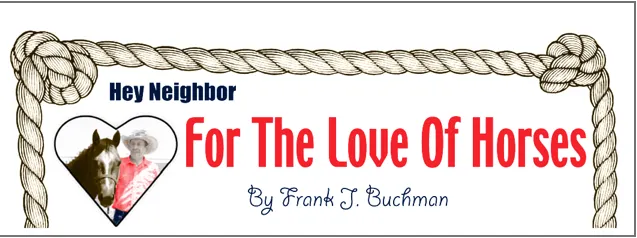“The cattle industry looks quite optimistic.”
That was the general take from the Cattle & Beef Outlook during the Beef Producers Information Seminar at Emporia.
Looking at cattle numbers, Glynn Tonsor, livestock economist from Kansas State University, said, “Expansion continues, but has moderated.”
Evaluating beef demand, “Despite mixed signals, the role of export demand has become clear,” Tonsor emphasized.
Sponsored by 580 WIBW Radio, the breakfast program was kickoff session for the Flint Hills Beef Fest.
National newspaper headlines often are overarching the beef industry economic outlook, according to Tonsor. Several stories shown on the PowerPoint screen verified both positive and negative influences.
Below the average from 2011 through 2015, this year’s steer calf prices are above 2016. That’s according to Livestock Marketing Information Center (LMIC) data.
Five-year weekly Southern Plains five-six weight number-one steer prices have averaged from $188 per hundredweight, to $210. Last year, prices averaged $210 in January, and bottomed at $125 in October.
“This year, calf prices averaged $180 in January, peaked at $188 in April, and have settled to $166 now,” Tonsor said.
Cow-calf returns above cash costs, including pasture rent, peaked in 2014, at $530.22. Returns for a pair in 2015, averaged $303.08.
However, calves lost an average of $23.32 a head for producers last year. In the past 28 years, since 1989, calves have returned below breakeven six years.
“Only in two years have cow-calf profits averaged more than $150,” Tonsor related.
Numbers compiled from the United States Department of Agriculture (USDA) and LMIC “estimated average cow-calf returns at $18.25, this year, 2017.”
Producers are retaining more beef cow replacements, Tonsor indicated. This year’s count is up 1.2 percent from a year ago, nearly the highest retention recorded, and equal to retention in 1996.
Especially noteworthy was the estimated annual average cow-calf costs including pasture rent.
“Costs averaged $883 per calf in 2014, requiring a market price of $160.55 for breakeven,” Tonsor said. “In 1990, it cost an average of $367 to produce a calf, requiring only a $66.73 market for breakeven.
“This year, producing a calf is predicted to cost $790, with breakeven at $143.64,” the economist said.
“Cattle inventory in the United States has always gone in cycles,” Tonsor said.
Charts indicated the nation’s count presently at about 98 million head, equal to the early’90s. That’s well below inventory of the early-’60s, about 109 million, and far below the mid-’70s, about 132 million head.
Recommending “price protection” to sell 550-pound calves in mid-September, Tonsor urged those buyers to consider “protection for future sale.”
Feedlot returns from January through July, 2017, have been “very strong.” However, net returns are predicted to “decline fast” this month and the next two quarters, according to Tonsor.
Speculating on feeder steer prices, Tonsor indicated the five-six weight steers to average $164-$166 ,third quarter; $148-$153, fourth quarter; with the year averaging $159-$163.
Lightweight steers in first quarter of the new year are seen at $152-$158, and $155-$162, second quarter
Forecast average for seven-eight weight steers this quarter is $137-$140, moving up to $142-$144, the final quarter. In the new year, price projection is $138-$142, first quarter, and $135-$140, second quarter.
Live slaughter steer prices, based on a five-market average, Tonsor indicated third quarter prices averaging $117-$119, up 3.8 percent from a year ago. Fourth quarter average is seen at $117-$119, up 9.6 percent.
However, next year, the economist pointed to a first quarter slaughter market of $118-$121, down 2.8 percent, and $120-$124 in second quarter, down 8.1 percent.
Commercial beef production is moving up, compared to the past seven years. Tonsor speculated quarterly beef production topping at nearly 7 billion pounds by the end of next year.
With expanded beef exports and reduced beef imports, Tonsor forecasted per capita beef consumption to increase to 57.9 pounds next year, before declining back to 56 pounds by 2026.
Long-term projections from USDA indicated all cattle to average $105.87 in 2017, with calves, $165.24, and slaughter steers, $106.25.
For 2018, the all cattle prices are seen at $117.57; calves, $172.03; and steers, $117.99. For 2019, all cattle, $118.15; calves, $169.23; and steers, $118.57.
Predictions for 2020 prices, all cattle, $114.88; calves, $156.15; and steers, $115.28.
However, there’ll be a decline at decade’s end, with 2026 markets forecasted for all cattle, $104.16; calves, $138.81; and steers, $104.52.
In wrap-up, Tonsor said, “For cow-calf producers, profitability is converging toward long-term levels, with 2017 and 2018 better than expected.
“For stocker operators, the dollar at stake has moderated, yet margins vary widely across situations.
“Feedlot operators have had recent notable equity recovery, but from this month forward, there will be challenges,” the economist concluded.



